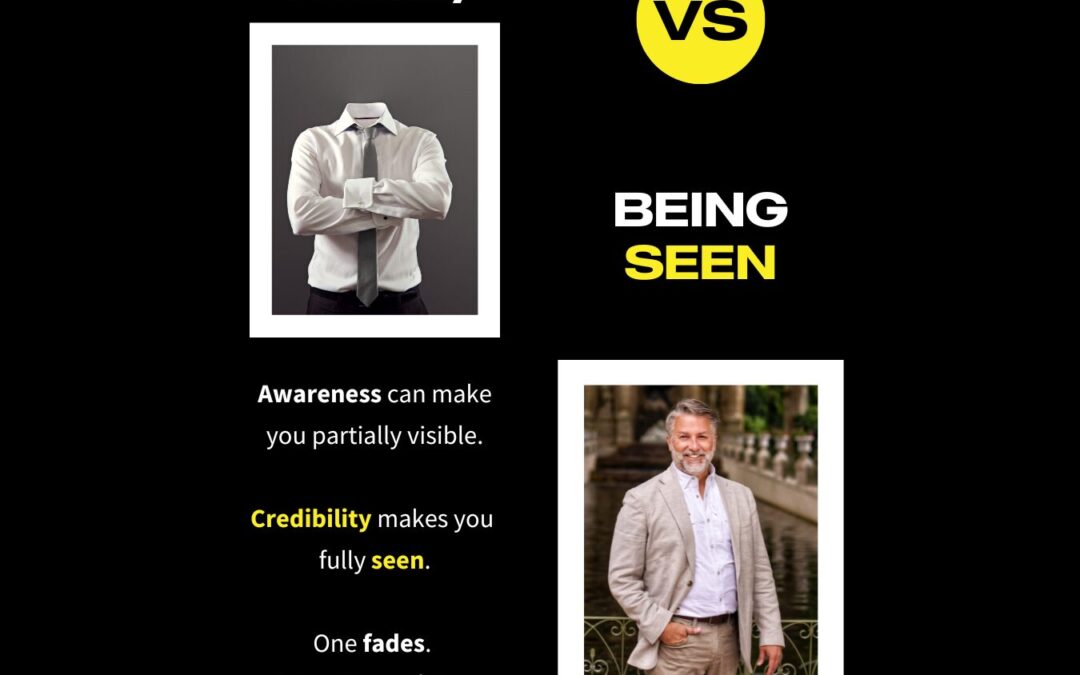Opportunities Should Find You
How to Create Inbound Leads Without the Hard Sell
We’ve all been there — chasing down the next opportunity like a door-to-door salesman. Cold messages, pitch decks, follow-ups that go nowhere. You get tired of always being in “hunt” mode.
But what if opportunities started finding you?
That’s the promise of Pull Marketing. And no, it’s not magic. It’s about being intentional with how you show up — online and offline. It’s about becoming known, trusted and top of mind before someone realizes they need what you offer.
Push vs. Pull
Push is effort.
Pull is magnetism.
Push is what I think of as personal branding — the loud “Look at me!” energy.
It’s designed to grab attention, but not always to build trust.
Pull, on the other hand, is professional branding — where your focus is on consistently adding value over time. That’s what earns trust. That’s what builds credibility. That’s what moves people through the funnel from awareness to actual engagement.
Push marketing is cold outreach, transactional follow-ups, chasing.
Pull marketing is what happens when people seek you out because your name keeps showing up, your content adds value and your reputation precedes you.
Here’s the reality: we live in a world where people Google you before they call you. They’ll check your LinkedIn. They’ll scan your posts. They’ll notice if you show up in conversations. And if all you’re doing is “being visible,” you’re just more noise in the feed.
Pull happens when your credibility does the talking.
How to Become a Magnet for Opportunity
So how do you create Pull? Here’s what’s worked for me — across consulting, career pivots and even casual conversations at a preschool gardening project.
✅ 1. Tell Better Stories
When someone says, “What do you do?” don’t recite your resume. Tell a story.
The structure I use — borrowed from my Strategic Effects framework — is simple:
Situation → Observation → Orientation → Analysis → Action → Repeat.
(Or, if you’re short on time: Situation → Action → Outcome.)
Let me show you what I mean.
Years ago, when my son was in a Pre-K program, the school hosted a parent gardening day. I ended up next to another dad, just shooting the breeze.
“What do you do?”
“Consulting — mostly ops and marketing strategy.”
But instead of rattling off industries or clients, I told a story about a recent project:
- A struggling sales division
- What I observed that leadership missed
- How we overhauled processes, retrained teams and realigned incentives
- And how that led to a 35% increase in pipeline velocity in under six months.
He listened. He nodded. Then said:
“We should talk.”
That random dirt-under-the-fingernails conversation led to a six-figure, unadvertised project.
Not because I was trying to pitch. But because I was ready to connect.
✅ 2. Be Interested Before You Try to Be Interesting
Here’s a truth I wish more people embraced:
Curiosity converts.
When you show up interested — asking questions, listening, following up — you build trust. You uncover pain points people didn’t even realize they were struggling with. You make space for possibility.
In my Digital Validation course, I teach this as a mindset:
- Don’t lead with your pitch
- Lead with your presence
- Be genuinely curious
- Let the conversation reveal the opportunity
It’s not about faking interest to get the sale.
It’s about being a learner, not a closer.
✅ 3. Be Interesting (and Don’t Be a Windbag)
You’ve probably met that guy at the networking event. He talks. And talks. And talks. But you can’t remember a single thing he said — because it was all about him.
Being interesting isn’t about being flashy. It’s about relevance, rhythm and reading the room.
Here’s what works:
- Share crisp stories, not monologues
- Use a little humor (you’re not auditioning for TEDx)
- Watch for engagement — if they’re leaning in, go deeper; if they’re glazing over, switch gears
Good stories stick. Great stories spread.
Pull Happens When You’re Present (Online, Too)
Let’s talk about your digital footprint.
When that headhunter called me and opened with,
“Michael Dell likes what you’re doing,”
that wasn’t luck.
That was the result of years of showing up online.
Sharing what I know. Commenting on what others post.
Not just building a personal brand — but building professional credibility.
That’s the key. Credibility is what drives Pull.
And most people get this wrong.
They focus too much on “posting” and not enough on engaging.
Here’s the stat that surprises most professionals:
- Only 5–10% of your visibility comes from posting
- Up to 60% or more comes from meaningful engagement — commenting, connecting, contributing to conversations
Want to build inbound leads? Start by adding value to other people’s posts. Consistently. Authentically. Thoughtfully.
Final Thoughts: Pull Is a Practice
Inbound leads don’t come from wishful thinking.
They come from reputation, relevance and relationships.
If you want to stop chasing your next opportunity, ask yourself:
- Are you telling stories that connect?
- Are you curious and helpful in conversations?
- Are you building credibility through your content and comments?
- Are you giving people a reason to remember you?
Push gets you on the radar.
Pull gets you in the room.
Let your credibility do the work.
Want help crafting the stories that lead to opportunity? That’s exactly what I teach in Digital Validation.


